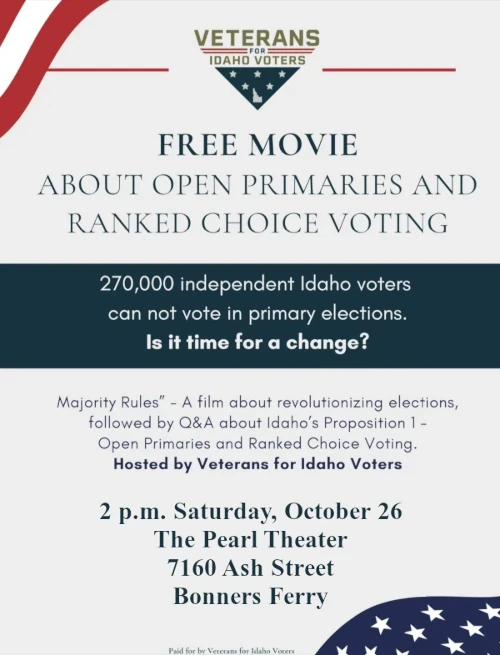by Timothy Braatz
 Do you want greater democracy or less democracy?
Do you want greater democracy or less democracy?
When an elected legislature votes on a bill, that’s “representative democracy.” But does that legislature actually represent the interests of the general population?
When the general population votes Yes or No on a proposition, that’s greater democracy—the voters represent themselves. Majority wins.
Proposition 1, if passed, will establish the nonpartisan, open primary—open to all voters and all candidates, regardless of party affiliation. Having only one primary will save the public money. More important, the general population, not party officials or wealthy donors, will determine which candidates matter. Greater democracy.
After the open primary, the four top vote-getters in a race, regardless of affiliation, advance to the general election. A candidate receiving over 50 percent of the votes in the general election will take office. Majority wins.
But what if none of the four finalists surpasses 50 percent? Time for a runoff!
To spare us the hassle, campaigning, and public expense of a runoff election, Proposition 1 provides an elegant resolution: Instant Runoff based on Ranked Choice.
Ranked Choice is simple. In the general election, you have the option of ranking the four finalists as your first choice, second choice, third choice, fourth choice. You are voting for your first choice, but also saying how you will vote in case of a runoff.
Instant Runoff is also easily understood. If your first choice is eliminated in the runoff, your second choice is counted. If your first and second choices are eliminated, your third choice is counted. It works like an elimination tournament, and you retain a say in the final outcome. Like this:
Round 1 (General Election—4 finalists): If no one wins with over 50 percent, the 4th place candidate is eliminated and the other three advance.
Round 2 (First Runoff—3 finalists): Voters who originally voted for the eliminated candidate now have their second choice counted instead. This will change the totals for the final three. If one of them now surpasses 50 percent of the vote, we have a winner! Otherwise, the 3rd place candidate is eliminated and the other two advance.
Round 3: (Second Runoff—2 finalists): As in Round 2, the remaining candidates will receive the votes of the eliminated candidates, depending on how they were ranked on the original ballots. One of the two finalists will now win with over 50 percent.
Ranked Choice has two important advantages over the current system. First, you can “vote your conscience”—vote for your preferred candidate—without worrying that you are helping to elect a candidate you don’t like. Second, the winning candidate will never have less than majority support.
Proposition 1 means voters are empowered. Majority wins. Greater democracy.
The opponents of Proposition 1 have a problem. They can’t openly campaign for less democracy, because greater democracy is very popular. Instead, they stoop to childish lies:
Lie: Proposition 1 comes from California. (It doesn’t, but strawberries do. Are you going to vote against strawberries?)
Lie: Instant Runoff is too confusing. (This is like saying voters in Idaho are dumber than voters in Alaska, where the Proposition 1 model has been used successfully since 2021.)
Lie: Ranked Choice is rigged. (This is the typical complaint of election losers who reject greater democracy and refuse to accept the voters’ decision.)
You can reject the silly lies and support greater democracy in Idaho by voting Yes for Prop 1.
To see how this electoral model works in Alaska, please attend the film, “Majority Rules,” at the Pearl Theater, this Saturday, October 26, at 2 p.m., sponsored by Veterans for Idaho Voters. The viewing is free and an excellent opportunity for voters to discuss voting. That’s greater democracy in action!
